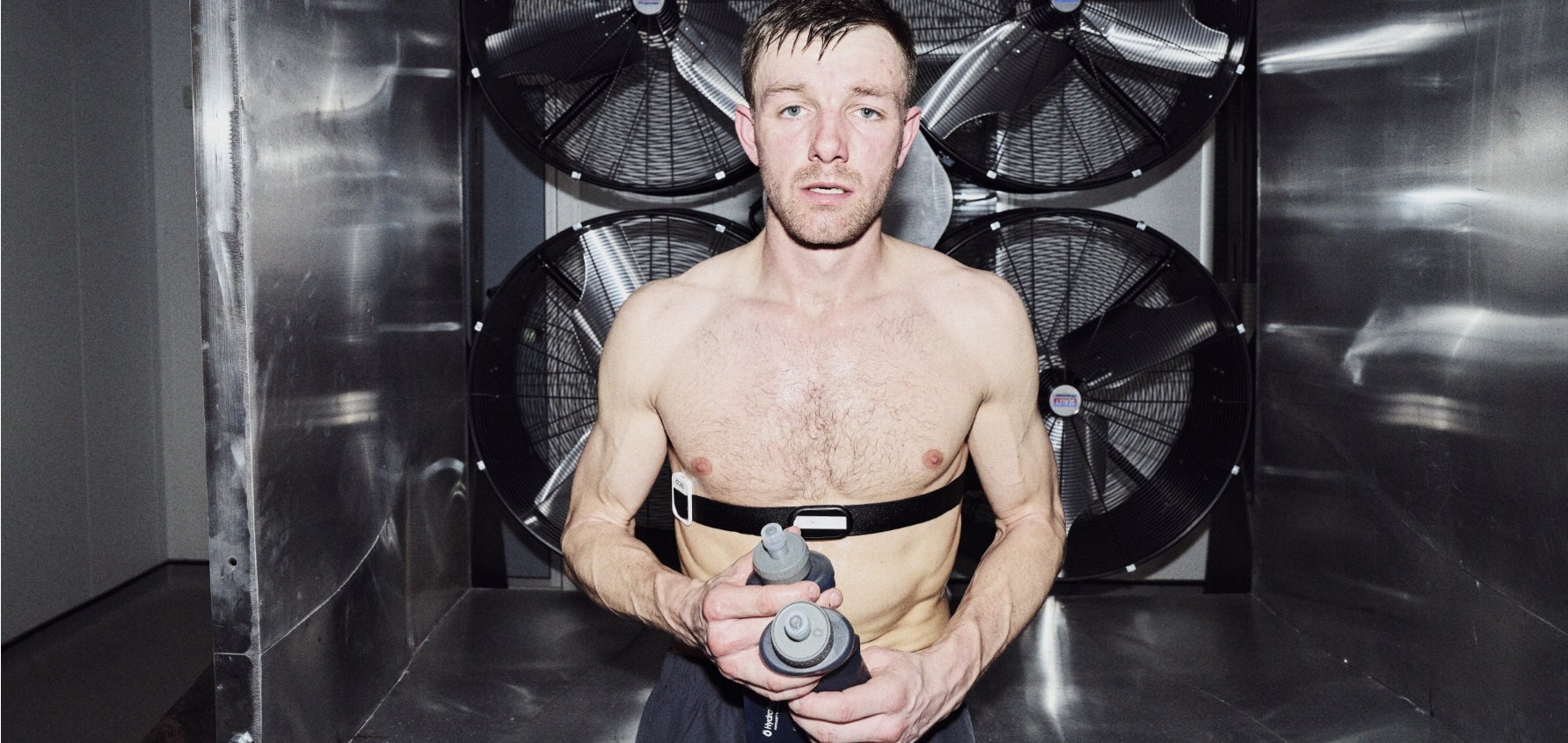
Pushing limits - Jack has been training in state-of-the-art heat and altitude chambers as part of a scientific approach his next big race.
Jack Scott is preparing for his toughest ultramarathon since smashing the Spine Race record in 2024.
The UK-based INOV8 athlete will head across The Atlantic in May to race the formidable Cocodona 250 in Arizona, US.
The 250-miler from Black Canyon City to Flagstaff is now in its fifth year and is quickly building cult status amongst the ultra running community.
Incorporating 40,000ft (12,200m) of ascent, organisers describe it as “the most diverse point-to-point 200+ mile footrace in America.”
They add: “The course is challenging, rugged, steeped in history, and stunningly beautiful. Some steps will be effortless, others will feel impossible, but each will carry you on a life-altering adventure."
This will be Jack’s first time racing in the US and his longest ultra since that incredible win at the 268-mile Spine Race, when he beat the course record of Jasmin Paris by more than 10 hours.
In preparation, Jack has taken a sabbatical from work and activated ‘full-time’ runner mode. He’s also enlisted the help of sports performance experts at Leeds Beckett University, whose facilities include state-of-the-art altitude and heat chambers.
Cocodona 250 Q&A with Jack Scott
1. What is Cocodona 250 and why have you chosen it as your primary race for 2025?
Cocodona is a 250-mile (255 miles this year) trail race starting in the foothills of the Bradshaw Mountains, Arizona, and finishing 7,000ft above sea level in Flagstaff.
If I’m going to run a long way again and go close to, or maybe even beyond, the edge, I need a new space. I need a change in landscape and competition, and to feel away from the UK scene. That’s why I’ve chosen it as my primary race for 2025.
2. What are the biggest challenges you’re expecting to face?
Heat and exposure to the sun on day one and some of day two, when there is very little shade.
The course is linear uphill and without being crazy steep (40,000ft over the whole route) there is a sustained spell of at least 130 miles above 2,000m. The thin air and runnable course make this a fast race and one full of opportunity. A world class and ruthless field of runners excites me.
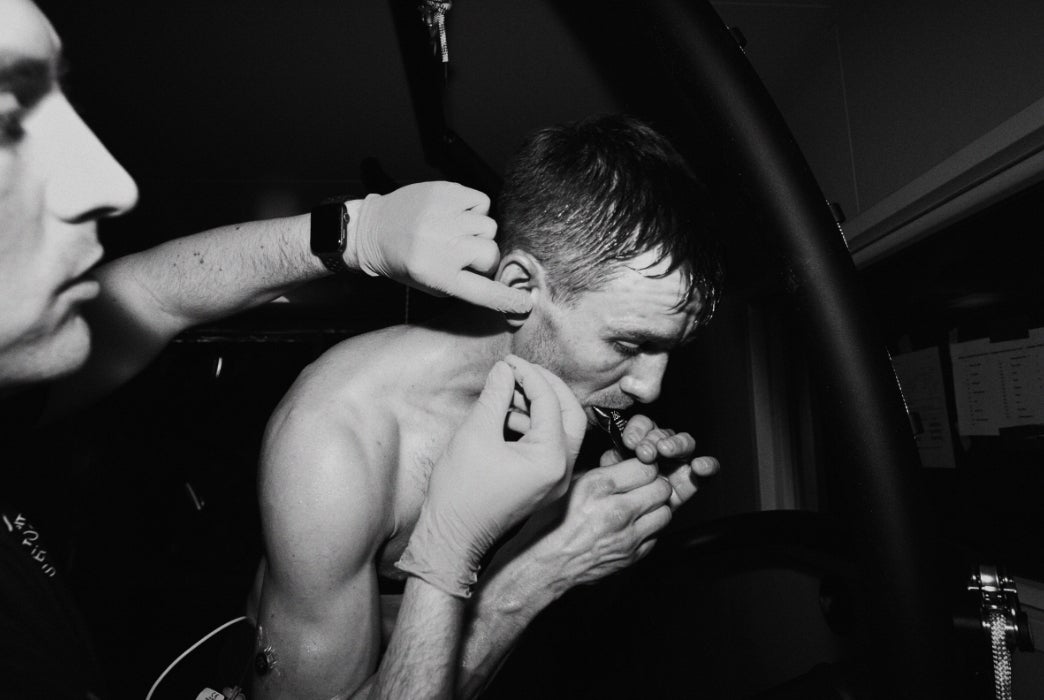
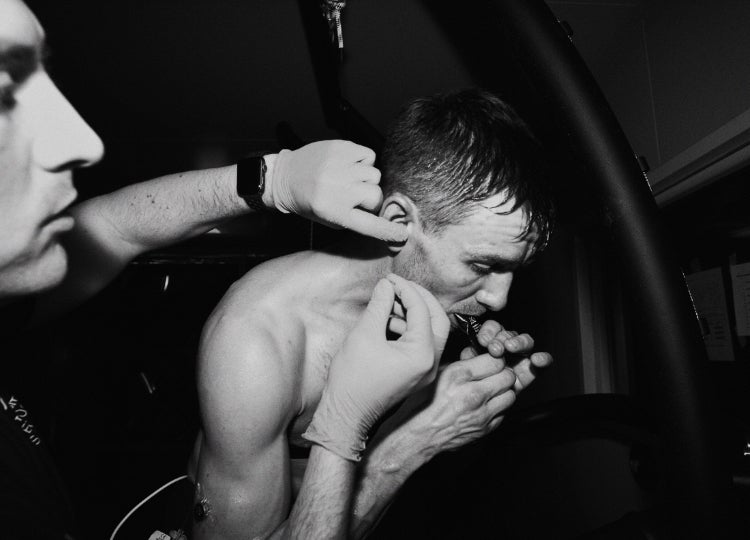
3. What are you doing in your training to prepare for these challenges?
I will be doing moderate mileage as usual, with a focus on speed from mid-February to the end of March. Then I will transition to a more mountain- based spell of training. I’m heading to southern Spain in mid-April to do long training runs in race-like conditions. Here I will run to time and not distance, getting used to running against the clock instead of mile markers.
I’m working in the lab with Leeds Beckett University, using their state-of-the-art altitude and heat chambers to prepare for this race. The extremities I’m being exposed to (43C heat / 2,500m altitude) and the programme we are following is an evolution of their work with Olympic marathon runners who prepared for Tokyo and Paris with the team.
We are putting our own spin on things and mimicking race conditions during my sessions. I will have travelled from my home in Staffordshire to Leeds 15+ times by the end of the block. Alongside this I’m doing my own heat training at home as well as a 36-night stint sleeping in an altitude tent. All this should be enough to give me a chance, I hope.
Numbers from the first day of testing at the university will be compared to those taken in the middle and at the end of the programme. They’ll look at levels of hemoglobin in my blood and how my sweat rate will increase due to my body’s senses being woken up and triggered over the weeks. The numbers are already encouraging and that backs up the way my body is feeling.

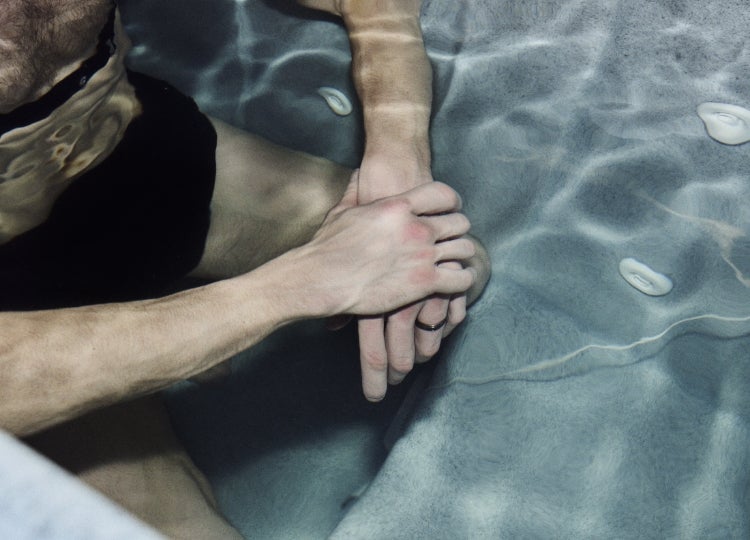
To get the most accurate data we are using special thermostat pills. I activate a pill, which is linked to a handheld device, and it gives visual readings from inside my bowel via Bluetooth signals. To make sure the pill is in place I take it around 4am, it then passes through the stomach and is digested with my breakfast.
By the time I’m in the heat chamber it’s live and doing its job. This also works well for hot-water immersion sessions, which I’ve been doing after treadmill workouts. I’m very grateful to have these facilities and the expertise of Dan Snape and his team available to me.
All this stuff sounds shiny, a little crazy and dynamic. I’ve seen runners in the past get fixated on the training they’ve done and lose sight of the fact they’ve got to run a bloody long way, alongside some world class athletes who want it and deserve it.
My physiology is vital as always. I am not relying on my lab testing for some superpower. It will hurt like it always does when going beyond 130 miles. The sleep game is risky and dangerous, and it will come down to grit, experience and want. That can’t be taught in a lab or measured on a machine.
4. What are your ambitions / goals for the race?
Find peace in the long run again, give myself up to the sport, and take the shot when the opportunity shows itself.
5. Will you head out early ahead of the race and acclimatize further?
I declined the offer to head over to Arizona and recon the course three weeks pre-race. I like being at home and in my own space, with my wife and dog. I’ll be flying out 6 days pre-race and staying in Flagstaff before heading south for the start.
My work-life balance has changed. We have moved house, settled quickly, and the foundations are there for me to go and do my thing. I’ve also taken a sabbatical from my construction site work and gone ‘full-time’ runner, focusing on what lies ahead and waiting.
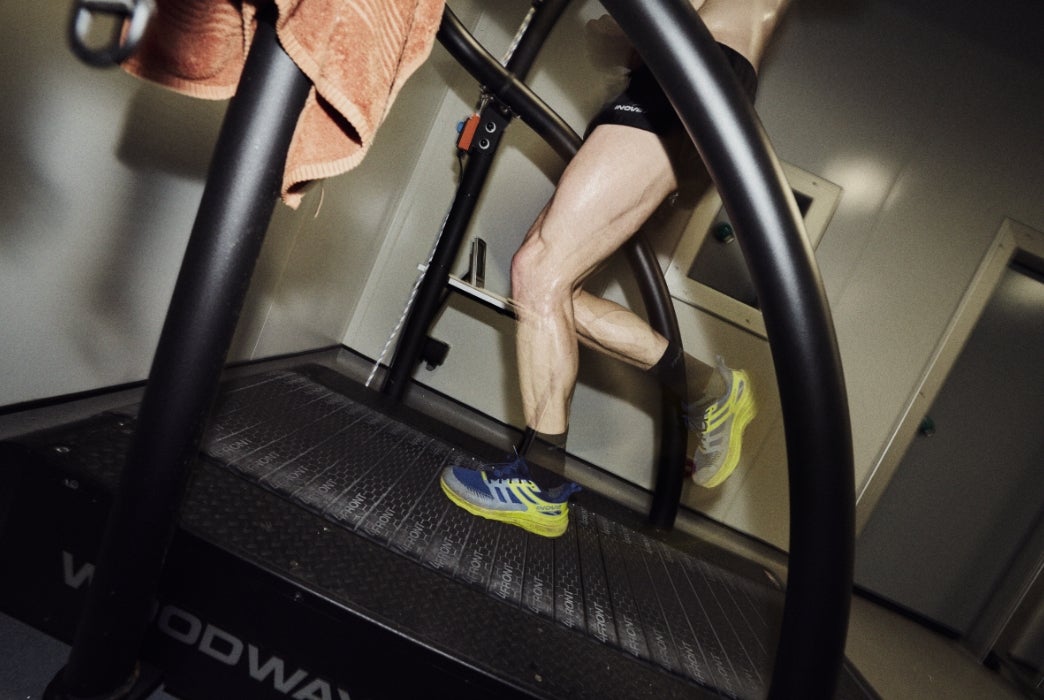
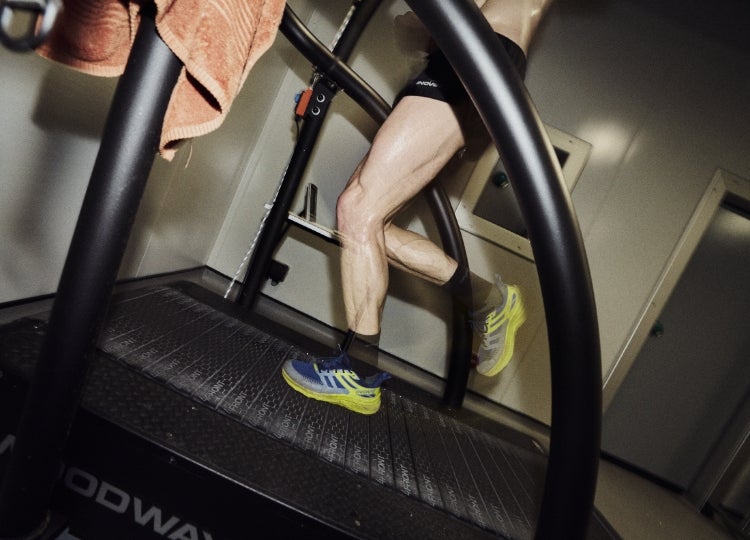
6. Have you taken advice from others who have raced Cocodona 250 previously?
I’ve spoken to a friend of a friend who lives in Arizona. She has been very helpful with some pre-race expectations and recommended some products she found useful when completing the race last year.
7. What is the closest race / challenge you’ve done that can compare?
I have experience of going beyond 200 miles and it’s always been under pressure with a lot on the line. As for terrain and environment, the landscape in Arizona will be totally new and that’s a huge draw for me.
8. The Spine Race is similar in length, but the environment is completely different. Are there learnings from The Spine Race that can you take into Cocodona 250?
This has been highlighted in my pre-race physiological prep and I’m taking comfort in the fact I’ve been out for much longer than I’m going to need in this race. My Spine was 85 hours in 2023 and 72 hours in 2024. I’ve also been out for 55 hours on the Southern Upland Way. To achieve what I want at Cocodona 250, I will be out for sub-60 hours.
The body and brain can do it, I know that. I must move quickly and efficiently, be patient and wait for my strengths to shine through.
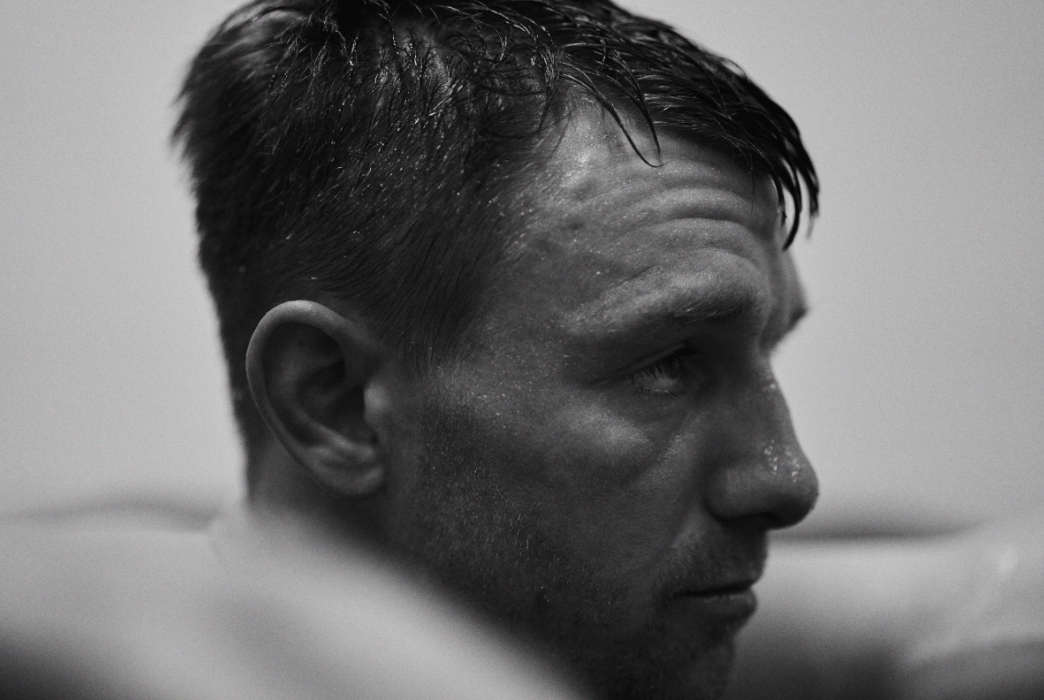
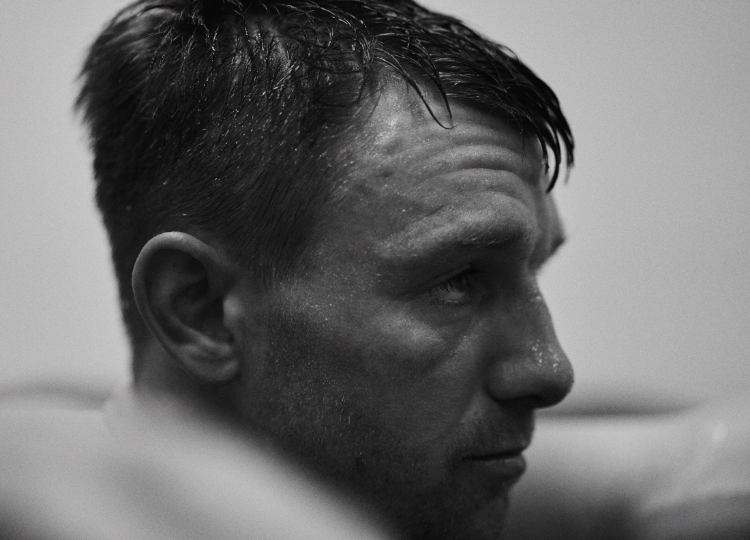
9. When times get hard – as they ultimately will in a 250-mile race – what will you draw on to keeping you going?
I want to improve, learn and grow my portfolio of long-distance performances. This is a huge opportunity to do that, somewhere new and fresh.
Show what you can do then get the hell out of there, home to Jess and Win.
10. What key running kit will you use for Cocodona 250 and why?
There is no monster kit list for this one compared to something like the Spine Race. Again, that was a huge draw for me, and why it helps make for a fast race. There are lots of checkpoint opportunities, 15 in total, so I’ll be travelling light with the RACEPAC 8.
On my feet I’ll have the soon-to-be-released TRAILTALON™ ZERO – I’ve been doing lots of my training in prototypes of this shoe, as well as the TRAILTALON™ SPEED and TRAILFLY™ MAX.
Jack Scott is preparing for his toughest ultramarathon since smashing the Spine Race record in 2024.
The UK-based INOV8 athlete will head across The Atlantic in May to race the formidable Cocodona 250 in Arizona, US.
The 250-miler from Black Canyon City to Flagstaff is now in its fifth year and is quickly building cult status amongst the ultra running community.
Incorporating 40,000ft (12,200m) of ascent, organisers describe it as “the most diverse point-to-point 200+ mile footrace in America.”
They add: “The course is challenging, rugged, steeped in history, and stunningly beautiful. Some steps will be effortless, others will feel impossible, but each will carry you on a life-altering adventure.
This will be Jack’s first time racing in the US and his longest ultra since that incredible win at the 268-mile Spine Race, when he beat the course record of Jasmin Paris by more than 10 hours.
In preparation, Jack has taken a sabbatical from work and activated ‘full-time’ runner mode. He’s also enlisted the help of sports performance experts at Leeds Beckett University, whose facilities include state-of-the-art altitude and heat chambers.
Cocodona 250 Q&A with Jack Scott
1. What is Cocodona 250 and why have you chosen it as your primary race for 2025?
Cocodona is a 250-mile (255 miles this year) trail race starting in the foothills of the Bradshaw Mountains, Arizona, and finishing 7,000ft above sea level in Flagstaff.
If I’m going to run a long way again and go close to, or maybe even beyond, the edge, I need a new space. I need a change in landscape and competition, and to feel away from the UK scene. That’s why I’ve chosen it as my primary race for 2025.
2. What are the biggest challenges you’re expecting to face?
Heat and exposure to the sun on day one and some of day two, when there is very little shade.
The course is linear uphill and without being crazy steep (40,000ft over the whole route) there is a sustained spell of at least 130 miles above 2,000m. The thin air and runnable course make this a fast race and one full of opportunity. A world class and ruthless field of runners excites me.


3. What are you doing in your training to prepare for these challenges?
I will be doing moderate mileage as usual, with a focus on speed from mid-February to the end of March. Then I will transition to a more mountain- based spell of training. I’m heading to southern Spain in mid-April to do long training runs in race-like conditions. Here I will run to time and not distance, getting used to running against the clock instead of mile markers.
I’m working in the lab with Leeds Beckett University, using their state-of-the-art altitude and heat chambers to prepare for this race. The extremities I’m being exposed to (43C heat / 2,500m altitude) and the programme we are following is an evolution of their work with Olympic marathon runners who prepared for Tokyo and Paris with the team.
We are putting our own spin on things and mimicking race conditions during my sessions. I will have travelled from my home in Staffordshire to Leeds 15+ times by the end of the block. Alongside this I’m doing my own heat training at home as well as a 36-night stint sleeping in an altitude tent. All this should be enough to give me a chance, I hope.
Numbers from the first day of testing at the university will be compared to those taken in the middle and at the end of the programme. They’ll look at levels of hemoglobin in my blood and how my sweat rate will increase due to my body’s senses being woken up and triggered over the weeks. The numbers are already encouraging and that backs up the way my body is feeling.


To get the most accurate data we are using special thermostat pills. I activate a pill, which is linked to a handheld device, and it gives visual readings from inside my bowel via Bluetooth signals. To make sure the pill is in place I take it around 4am, it then passes through the stomach and is digested with my breakfast.
By the time I’m in the heat chamber it’s live and doing its job. This also works well for hot-water immersion sessions, which I’ve been doing after treadmill workouts. I’m very grateful to have these facilities and the expertise of Dan Snape and his team available to me.
All this stuff sounds shiny, a little crazy and dynamic. I’ve seen runners in the past get fixated on the training they’ve done and lose sight of the fact they’ve got to run a bloody long way, alongside some world class athletes who want it and deserve it.
My physiology is vital as always. I am not relying on my lab testing for some superpower. It will hurt like it always does when going beyond 130 miles. The sleep game is risky and dangerous, and it will come down to grit, experience and want. That can’t be taught in a lab or measured on a machine.
4. What are your ambitions / goals for the race?
Find peace in the long run again, give myself up to the sport, and take the shot when the opportunity shows itself.
5. Will you head out early ahead of the race and acclimatize further?
I declined the offer to head over to Arizona and recon the course three weeks pre-race. I like being at home and in my own space, with my wife and dog. I’ll be flying out 6 days pre-race and staying in Flagstaff before heading south for the start.
My work-life balance has changed. We have moved house, settled quickly, and the foundations are there for me to go and do my thing. I’ve also taken a sabbatical from my construction site work and gone ‘full-time’ runner, focusing on what lies ahead and waiting.


6. Have you taken advice from others who have raced Cocodona 250 previously?
I’ve spoken to a friend of a friend who lives in Arizona. She has been very helpful with some pre-race expectations and recommended some products she found useful when completing the race last year.
7. What is the closest race / challenge you’ve done that can compare?
I have experience of going beyond 200 miles and it’s always been under pressure with a lot on the line. As for terrain and environment, the landscape in Arizona will be totally new and that’s a huge draw for me.
8. The Spine Race is similar in length, but the environment is completely different. Are there learnings from The Spine Race that can you take into Cocodona 250?
This has been highlighted in my pre-race physiological prep and I’m taking comfort in the fact I’ve been out for much longer than I’m going to need in this race. My Spine was 85 hours in 2023 and 72 hours in 2024. I’ve also been out for 55 hours on the Southern Upland Way. To achieve what I want at Cocodona 250, I will be out for sub-60 hours.
The body and brain can do it, I know that. I must move quickly and efficiently, be patient and wait for my strengths to shine through.


9. When times get hard – as they ultimately will in a 250-mile race – what will you draw on to keeping you going?
I want to improve, learn and grow my portfolio of long-distance performances. This is a huge opportunity to do that, somewhere new and fresh.
Show what you can do then get the hell out of there, home to Jess and Win.
10. What key running kit will you use for Cocodona 250 and why?
There is no monster kit list for this one compared to something like the Spine Race. Again, that was a huge draw for me, and why it helps make for a fast race. There are lots of checkpoint opportunities, 15 in total, so I’ll be travelling light with the RACEPAC 8.
On my feet I’ll have the soon-to-be-released TRAILTALON™ ZERO – I’ve been doing lots of my training in prototypes of this shoe, as well as the TRAILTALON™ SPEED and TRAILFLY™ MAX.
